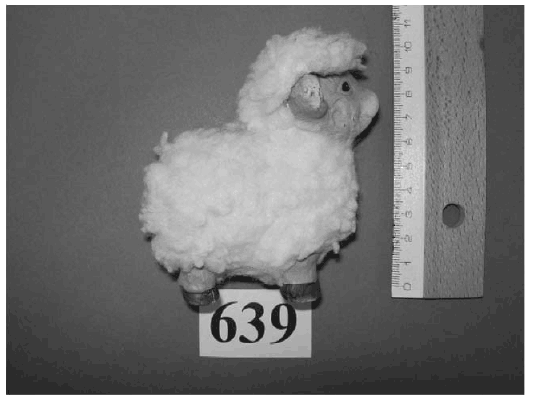
COMMISSION REGULATION (EC) No 1462/2006of 2 October 2006 concerning the classification of certain goods in the Combined Nomenclature- "Official Journal of the European Union", No L 272/13 of 3.10.2006 - |
THE COMMISSION OF THE EUROPEAN COMMUNITIES,
Having regard to the Treaty establishing the European Community,
Having regard to Council Regulation (EEC) No 2658/87 of 23 July 1987 on the tariff and statistical nomenclature and on the Common Customs Tariff(1), and in particular Article 9(1)(a) thereof,
_______________
(1) OJ L 256, 7.9.1987, p. 1. Regulation as last amended by Commission Regulation (EC) No 996/2006 (OJ L 197, 1.7.2006, p. 26).
Whereas:
(1) In order to ensure uniform application of the Combined Nomenclature annexed to Regulation (EEC) No 2658/87, it is necessary to adopt measures concerning the classification of the goods referred to in the Annex to this Regulation.
(2) Regulation (EEC) No 2658/87 has laid down the general rules for the interpretation of the Combined Nomenclature. Those rules apply also to any other nomenclature which is wholly or partly based on it or which adds any additional subdivision to it and which is established by specific Community provisions, with a view to the application of tariff and other measures relating to trade in goods.
(3) Pursuant to those general rules, the goods described in column 1 of the table set out in the Annex should be classified under the CN code indicated in column 2, by virtue of the reasons set out in column 3.
(4) It is appropriate to provide that binding tariff information issued by the customs authorities of Member States in respect of the classification of goods in the Combined Nomenclature and which is not in accordance with this Regulation, can continue to be invoked by the holder for a period of three months, under Article 12(6) of Council Regulation (EEC) No 2913/92 of 12 October 1992 establishing the Community Customs Code(2).
(5) The Customs Code Committee has not issued an opinion within the time limit set by its Chairman,
______________
(2) OJ L 302, 19.10.1992, p. 1. Regulation as last amended by Regulation (EC) No 648/2005 of the European Parliament and of the Council (OJ L 117, 4.5.2005, p. 13).
HAS ADOPTED THIS REGULATION:
Article 1
The goods described in column 1 of the table set out in the Annex shall be classified within the Combined Nomenclature under the CN code indicated in column 2.
Article 2
Binding tariff information issued by the customs authorities of Member States which is not in accordance with this Regulation can continue to be invoked for a period of three months under Article 12(6) of Regulation (EEC) No 2913/92.
Article 3
This Regulation shall enter into force on the 20th day following its publication in the Official Journal of the European Union.
This Regulation shall be binding in its entirety and directly applicable in all Member States.
Done at Brussels, 2 October 2006.
For the Commission
László KOVÁCS
Member of the Commission
ANNEX
Description of the goods |
Classification CN code |
Reasons |
(1) |
(2) |
(3) |
An article, in the form of a sheep, measuring approximately 10 cm in height. A knitted fabric, representing the fleece, covers most of the ceramic body leaving part of the head and four hoofs visible. The fabric is glued on the ceramic body. (See photograph No 639) (*) |
6913 90 10 |
Classification is determined by the provisions of General Rules 1, 3(b) and 6 for the interpretation of the Combined Nomenclature and the wording of CN codes 6913, 6913 90 and 6913 90 10. It is an article of ceramic of the type designed essentially for the interior decoration of homes. It has no utility value and is wholly intended for ornamental use; it is not intended essentially for the amusement of persons and, therefore, it does not possess the character of toys of chapter 95. See the HS Explanatory Notes to heading 6913 first paragraph and second paragraph (A) and the HS Explanatory Notes to heading 9503 first paragraph. This article is a composite article made of ceramic and knitted fabric. The ceramic material forming the body of the article (figure of a sheep) is the material giving the essential character within the meaning of GR 3(b), as it gives the article its shape. |
(*) The photograph is purely for information.
